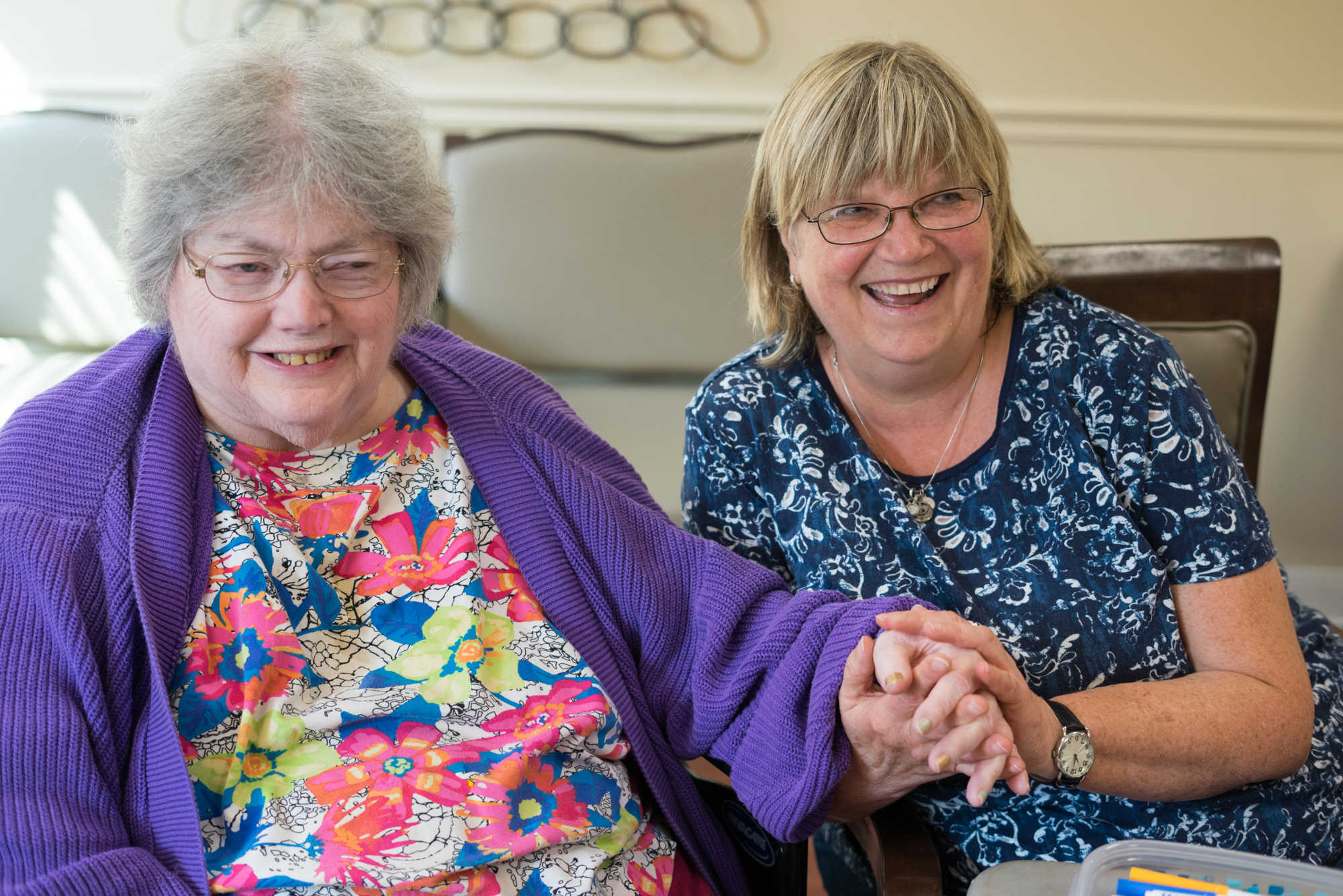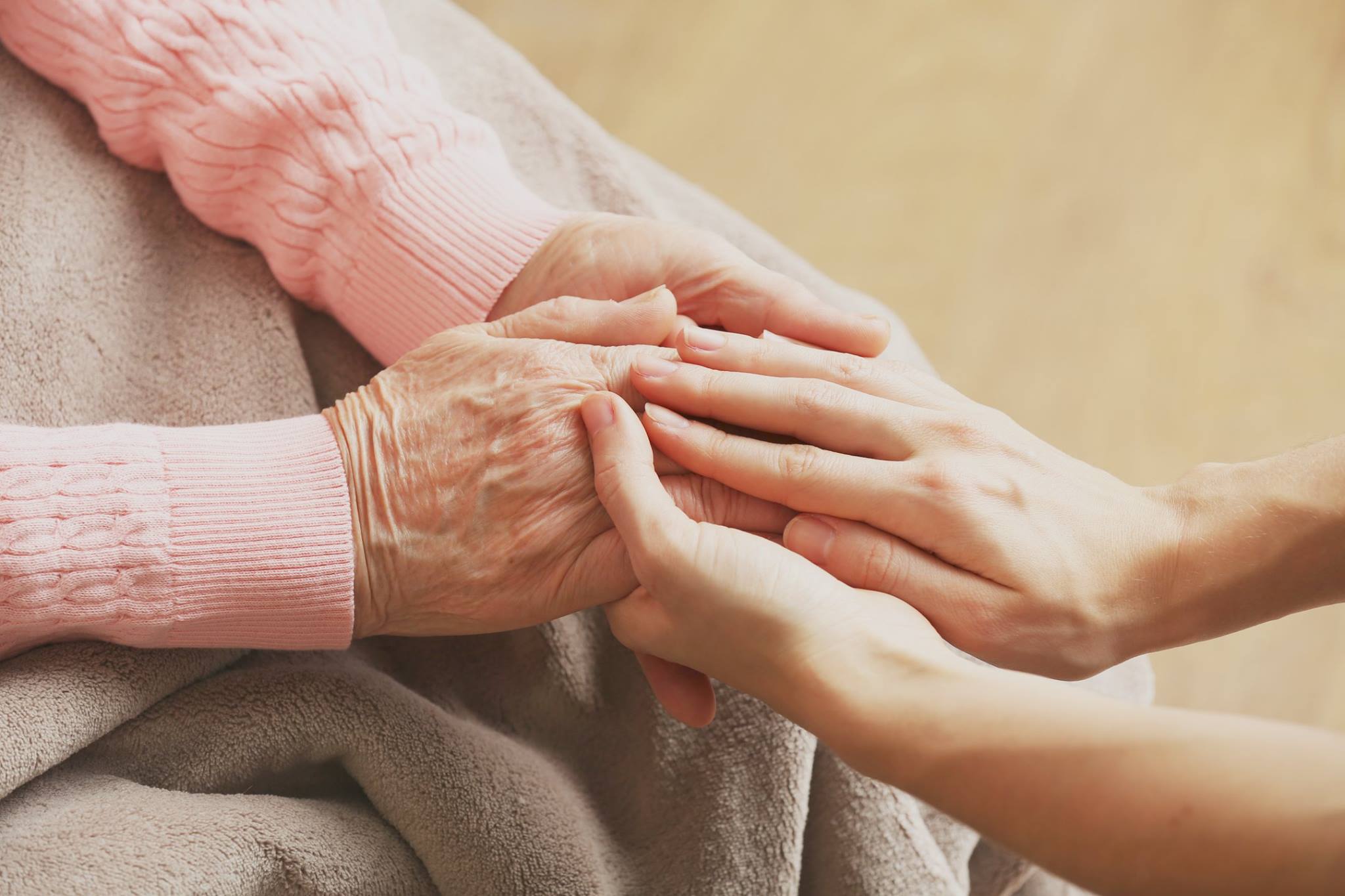Let’s call it…
People living in long-term care communities are being left behind. They’re surrounded by machines, medications, and schedules—but not people. Not their people. Nearly half the people living in long-term care communities in this country will go the whole week without a single visitor: Not one knock on the door, not one friendly voice calling their name.
.
They are aging in silence. Not because they want to, but because we, as a society stopped showing up. At the National Association of Long-Term Care Volunteers (NALTCV), we’re not okay with that. And we’re not waiting for permission to fix it.
One visit can change a life. One hour does matter. And one heart, wide open and willing, is a powerful force for human connection.
.
Three voices I’ll never forget…
Real change starts with listening, and sometimes, what we hear is heartbreaking.
While talking with a woman who had just moved into a nursing home, I asked her how things were going. She said:
“Well…ok. I have a lot of people around me but there is no one here just for me.”
Another time, I was visiting with a woman in a care community when a staff member came in with a paper cup of pills. As the woman took the cup, she turned to me and said:
“This is what they think I need. What you are doing for me is what I need.”
And then there was the man who had just celebrated his 92nd birthday. After a long conversation, he looked at me and said:
“To be human is to be loved and to have someone to love – as far as I can tell, I am still human.”
These moments stay with you. They’re not rare. They’re reminders of what’s missing—and what we can restore. What they show us is that true wellbeing goes beyond meals and medication—it hinges on feeling seen, known, and loved.
.
This isn’t a nice extra – It’s a necessary intervention
Loneliness and social isolation don’t just feel bad—they kill. They are associated with:
- A 29% increased risk of heart disease (Holt-Lunstad et al., 2015
- A 32% increased risk of stroke (Holt-Lunstad et al., 2015)
- A 50% increased risk of developing dementia (Livingston et al., 2020)
- A 26% increased risk of early death (Holt-Lundstad et al., 2015)
The U.S. Surgeon General has called loneliness a public health crisis, noting that its impact on mortality is comparable to smoking 15 cigarettes a day (Murthy, 2017). And the impact doesn’t stop there. Isolation and emotional neglect in long-term care are also linked to:
- Higher suicide rates: Adults over 85 have the highest suicide rate of any age group in the U.S. (CDC, 2022)
- Increased falls: Loneliness is associated with lower mobility, frailty, and a higher risk of serious falls (Shankar et al., 2017)
- Malnutrition: Malnutrition affects 20–60% of nursing home residents, and eating alone is a major risk factor (Bell et al., 2013)
- Inappropriate use of psychotropic medications: Psychotropics are often used in place of meaningful connection to manage behaviors (CMS, 2022)
These outcomes are preventable. Connection is not a luxury. It is a basic human need—and volunteers can help meet it.
The statistics are sobering, but they also provide a roadmap for change. If social connection can reduce risks so dramatically, imagine the impact of an organized, national movement of trained volunteers showing up every week in long-term care communities across the country.
.
Volunteers aren’t visitors. They’re lifesavers
Here’s what makes a companion volunteer different from a casual visitor:
- They’re trained to listen with intention
- They return consistently, building trust over time
- They don’t try to “fix” anything. They simply show up with heart
At NALTCV, we train volunteers to connect in a way that honors dignity, values stories, and nurtures authentic relationships. It’s not about entertainment. It’s about presence.
Our volunteers learn to meet people where they are, including those living with dementia, grief, and disconnection. They aren’t entertainers: they’re connectors: creating a bridge back to the world.
Volunteers don’t just fill time—they fill a void. And in doing so, they disrupt a system that quietly lets people fade away.
.
It’s not just the people living there – volunteers lift up the staff, too
Let’s be clear: long-term care staff are not the problem. They are the backbone of the system—and too often, they burn out under the weight of it.
While headlines may highlight the worst, we know there are far more good caregivers than bad. They are people who pour their hearts into work, who get attached, who stay after hours, and who cry in their cars when no one is looking.
Direct care workers in nursing homes report some of the highest levels of emotional exhaustion and stress among healthcare providers (Squillace et al., 2009).
Volunteers don’t replace staff—they support them. When a volunteer sits and talks with someone, it gives the caregiver a moment to breathe. When a volunteer shows up week after week, it reminds the staff they’re not alone.
In fact, many caregivers tell us that they feel seen when volunteers get involved. It validates their work. The presence of a trained volunteer says:
“You’re not the only one who cares.”
Volunteers often lift morale just by being present—by choosing to care, without being paid to do so. They show the staff that the people they care for are valued by the broader community, not just the facility.
.
One hour can echo for a lifetime
Most of us underestimate the power of a single hour. But in long-term care, where time can feel endless and empty, one hour of connection stands out like sunlight. People living in care don’t just want to be safe and clean—they want to be known.
And when a volunteer walks in and says, “Tell me about your life,” everything shifts.
We hear it all the time:
“I wait all week for her visit.”
“I finally feel like myself again.”
“It’s the only time I smile.”
“You made my day!”
These aren’t “nice” moments, they’re transformational. And for volunteers, it changes them too. They come in thinking they’re giving something away. They leave realizing they’ve received something in return that’s far greater.
Volunteering creates meaning and connection on both sides. It invites people—of all ages—to step outside of their routines and remember what really matters: being human together.
.
We train them to connect…
We don’ believe in sending people in unprepared. NALTCV trains volunteers to do more than show up—we train them to connect.
NALTCV volunteers are trained in how to build authentic relationships—especially with people who may be facing cognitive challenges, grief, or emotional withdrawal.
We give them tools to:
- Navigate awkward moments with compassion
- Communicate beyond words when necessary
- Stay present in silence
- Show up week after week with consistency and care
Our training goes beyond a checklist. It’s about helping volunteers become emotionally grounded and relationally aware. It’s about learning how to connect with someone who may no longer speak—or who hasn’t had a visitor in years.
We also provide ongoing support, connection with other volunteers, and continuing education—because showing up is just the beginning.
.
So…what’s holding you back?
If you’ve ever thought, “I’d like to help, but I’m not sure what I could do,” this is it.
- You can give one hour a week, you can be someone’s lifeline.
- You can sit with someone and listen to their story, you can help write a new one.
- You want to change the world, start with one heart.
And if you’re worried you don’t have the right” background – don’t be..
You don’t need medical training. You don’t need a degree.
You just need to care enough to show up.
You may not know what to say. You may not know what to expect. But if you’re willing to be present, we’ll help you with the rest.
.
A Final Word: This Is Bigger Than a Blog Post…
This isn’t a feel-good story. This is a call to action.
Because loneliness is killing people. Because falls, malnutrition, overmedication, and silent suffering should never be “just part of aging.” Because staff deserve backup, and people living in care deserve connection—not just care plans.
If you’re tired of waiting for the system to change, stop waiting.
Be the change.
We’ll train you. We’ll support you. We’ll walk beside you. All you need to bring is your heart.
One hour. One visit. One heart.
That’s how we change long-term care. Together. Start here…
References
Bell, C. L., Lee, A. S., & Tamura, B. K. (2013). Malnutrition in the nursing home. Current Opinion in Clinical Nutrition and Metabolic Care, 16(1), 48–53. https://doi.org/10.1097/MCO.0b013e32835ad504
Centers for Disease Control and Prevention. (2022).Suicide rising across the US. CDC Vital Signs. https://www.cdc.gov/vitalsigns/suicide/
Centers for Medicare & Medicaid Services. (2022). National Partnership to Improve Dementia Care in Nursing Homes. https://www.cms.gov/Medicare/Provider-Enrollment-and-Certification/SurveyCertificationGenInfo/National-Partnership
Holt-Lunstad, J., Smith, T. B., Baker, M., Harris, T., & Stephenson, D. (2015). Loneliness and social isolation as risk factors for mortality: A meta-analytic review. Perspectives on Psychological Science, 10(2), 227–237. https://doi.org/10.1177/1745691614568352
Livingston, G., Huntley, J., Sommerlad, A., Ames, D., Ballard, C., Banerjee, S., … & Cooper, C. (2020).
Dementia prevention, intervention, and care: 2020 report of the Lancet Commission. The Lancet, 396(10248), 413–446. https://doi.org/10.1016/S0140-6736(20)30367-6
Murthy, V. H. (2017). Work and the loneliness epidemic. Harvard Business Review. https://hbr.org/2017/09/work-and-the-loneliness-epidemic
Shankar, A., McMunn, A., Banks, J., & Steptoe, A. (2017). Loneliness, social isolation, and behavioral and biological health indicators in older adults. Health Psychology, 36(3), 179–187. https://doi.org/10.1037/hea0000437
Squillace, M. R., Bercovitz, A., Rosenoff, E., & Remsburg, R. E. (2009). The National Nursing Assistant Survey: Improving the evidence base for policy initiatives to strengthen the certified nursing assistant workforce. The Gerontologist, 49(2), 185–197. https://doi.org/10.1093/geront/gnp023




